Blue Spring Flowers for a Beautiful Garden
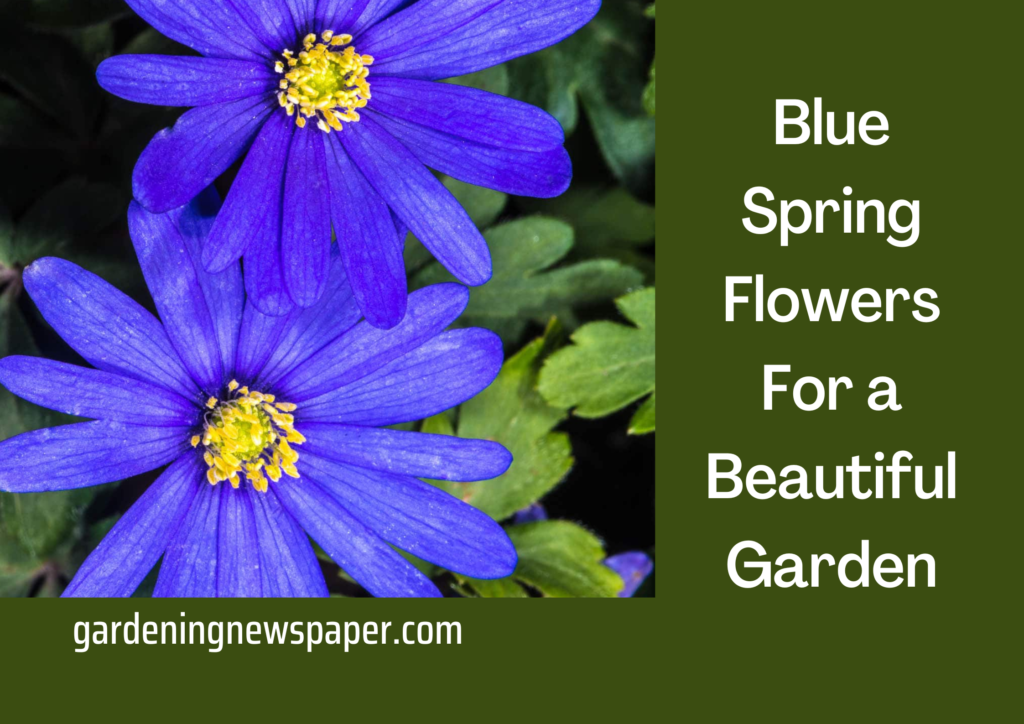
Nothing denotes the end of winter and amplifies your garden’s beauty like a cheery spring flower. From the first snowdrops and daffodils to primroses and hellebores, gardeners use spring flowers as an expression of spring to estimate the days until the temperatures raise again and they can spend leisure time in their gardens.
They are also necessary for pollinators. Many pollinators, such as bumblebees and butterflies hibernate and depend on spring flowers to assist them with nectar and pollen when they emerge from dormancy or hibernation. Nectar from spring flowers provides pollinators energy to fly and discover a mate or nest area, while pollen from spring flowers encourages bumblebees to start laying eggs for the next generation of bumblebees.
In early spring culture, everything in the garden awakes from its dormant condition. Early spring flowers also emerge and look very pleasant. They are in full bloom from late March to early April, but it mostly depends on weather conditions.
Are you just commencing your blue flower gardening experience and want to know what flowers to plant in spring? We’ve organized some spring plant concepts for you. It is easy to thrive and does not demand much attention, but simple care is needed to thrive as a healthy individual.
Selecting Spring Flowers
When selecting spring flowers, it’s essential to consider where you’ll grow them. Most thrive best in the sun or partial shade the sun heats the soil in which they develop, so they will bloom sooner if grown in a bright location. Also, evaluate whether you’re cultivating flowers in pots or on the ground and whether you need a temporary or permanent collection.
They are often associated with distinguishing symbolism. Tulips are a sign of hope and prosperity. The seeds of most spring flowers designate change, opening up to new opportunities and beginning a new chapter.
Note that many of the early spring blue flowering plants are bulbs that must be planted in the fall to flower the following spring.
Glory-Of-The-Snow (Chionodoxa)
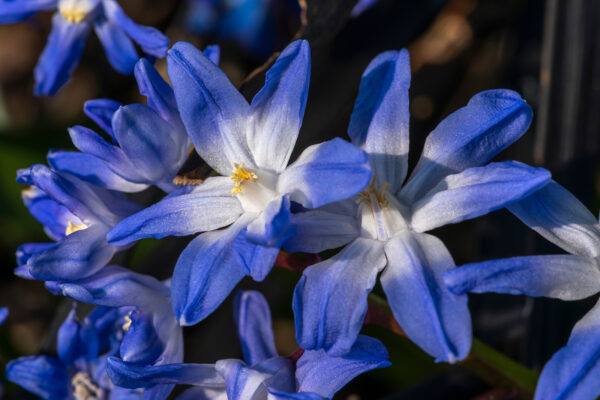
- Generally known as Blue Glory of the Snow (Chionodoxa)
- Sun, Partial Shade is good for this type.
- It gives a flower in early spring.
- Color: Blue Chionodoxa is an easy-to-grow bulbous plant native to the mountains of Turkey.
Plant bulbs in clusters of 5 to 7 in well-drained soil under trees or shrubs so that flowers bloom before green leaves appear in spring. - If planting in a lawn, do not trim until the leaves are dead or rejuvenate the bulbs for next year.
- The glory of the snow is generally not influenced by diseases. This plant is also pest resistant and repels deer and rodents.
Proposed variety:
- Chionodoxa luciliae
It blooms star-shaped blue flowers with a thin center. - Chionodoxa forbesii ‘Blue Giant'(some varieties)
The flowers are blue with white centers.
Siberian Squill (Scilla Siberica)
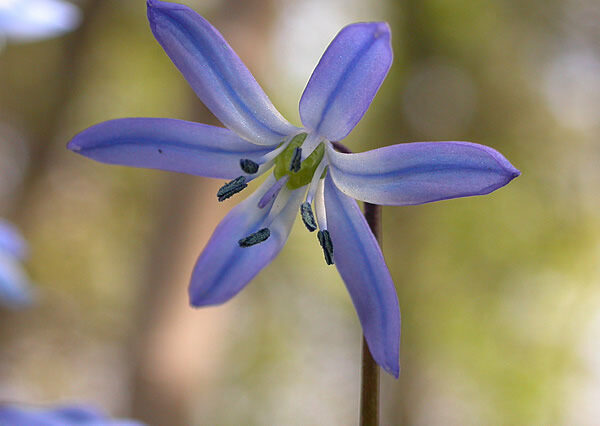
- Siberian Squill (Scilla Siberica) generally gives flowers in a blue shade.
- Sun, partial sun exposure is good, or shade.
- Flowering time: Early spring
- Flower color: Cobalt blue
- Siberian Squill gives flowers that are like small bell-shaped blue flowers blooms in early spring.
- They cultivate in the wild under deciduous trees and bushes.
- Can also be cultivated in lawns where grassy foliage has turned yellow by the time it requires to be mowed.
- This carefree plant should be uprooted after flowering to discourage unwanted self-seeding and reproduction.
- Scilla is deer-repellent and rodent-resistant.
Hyacinth
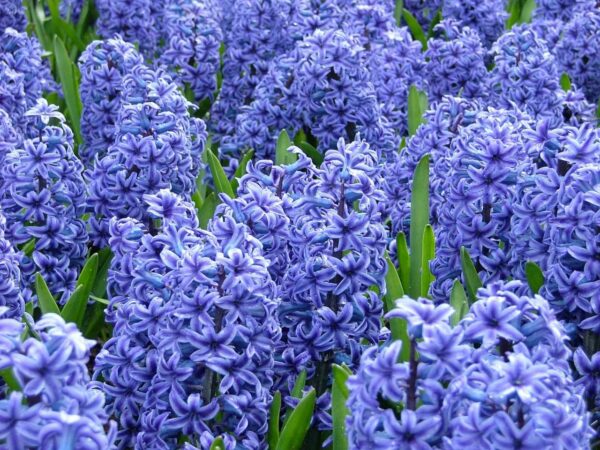
- Full sun, and partial shade are better for this plant.
- Flowering span: early spring
- Flower hue: blue, pink, white, yellow
- Hyacinth bulbs bloom in blue color with a pleasant scent that spreads throughout the garden, and they are repelling deer and vermin.
- For the best perception of fragrance and beauty, plant them in front of perennial boundaries or near pathways.
- You may require staking the flowers with thin bamboo sticks, but if cultivated as directed the flowers will hold each other.
- With proper treatment and care, hyacinths also survive as annuals. If you allow the leaves to die off naturally, the bulbs will flower next year. However, the blossoms are shorter and differently shaped.
Varieties which are recommended to plant.
- Delft Blue
- Royal Navy Double
Iris Reticulata

- Iris reticulata generally gives flowers in a blue shade.
- Full sun, and half shade are good for this plant.
- It gives flowers in early spring.
- Flower color: Bright cobalt blue with yellow center White marking
- Many gardeners prefer brighter ones. Iris Reticulata blossoms in early spring. These little plants emit soothing fragrances and give visual enjoyment.
- Grassy foliage should be removed when the plant turns brown after flowering. Iris reticulata slowly naturalizes over the years.
Some varieties of Iris reticulata
- Harmony
- Alida dwarf
- Frank Elder
Anemone Blanda blue
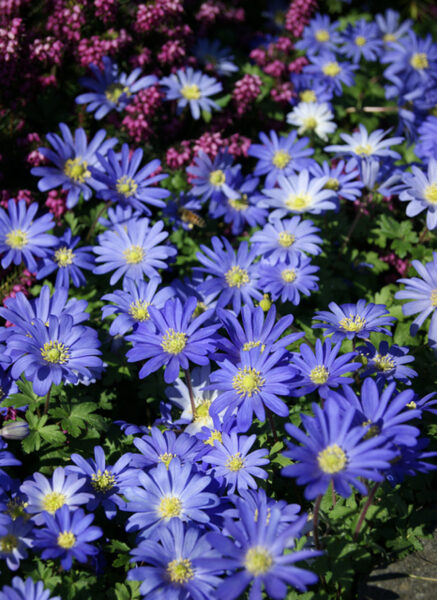
- Blue daisy flowers bloom in early spring.
- Charming Grecian Windflower likes moist, well-drained, fertile soil and it is best if you planted it on the front edge where the pretty flowers are visible.
- This plant grows wild each year and covers the ground with beautiful blue flowers until it dies.
- Does not affected by rabbits and deer because of its scent.
- Some parts of the plant are poisonous to humans and pets, so you have to pay attention to this matter.
Puschkinia Libanotica (Striped Squill)
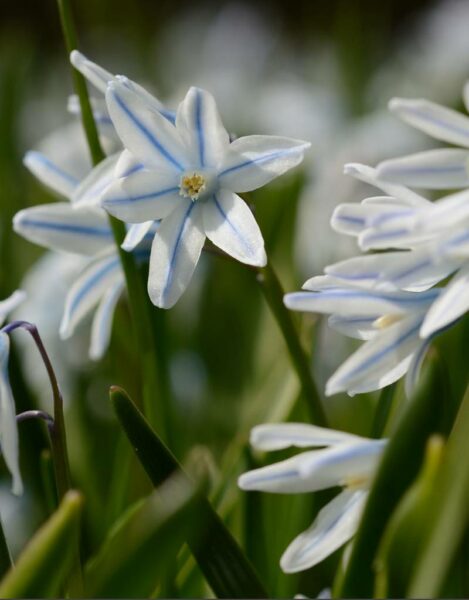
- White and blue Puschkinia flowers give distinctive look to your garden. It thrives well with other spring-blooming plants.
- White flowers with blue stripes or full blue flowers. In both chances, the blossoms are aromatic and very appropriate for rock gardens.
- Deer don’t like pushkinia because of its strong scent.
Hepatica (Hepatica nobilis)
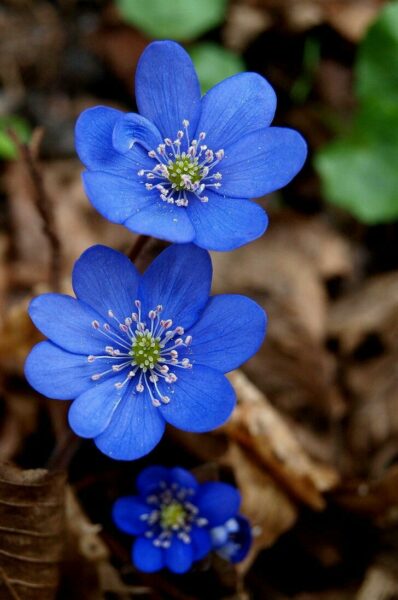
- Blue Hepatica nobilis Flower
- Partial to full shade is better for this plant.
- Flowering period: Early spring to mid-spring
- Flower color: Blue, white or pink Small blue wildflowers cover the ground in early spring.
- Evergreen foliage with light blue, lavender, pink, or white flowers.
- It is very easy to grow, and it emits a very fresh and delicate spring scent.
- Rainy days can prevent flowers from fully opening, but half-opened flowers are also bright spots in the garden.
Primula
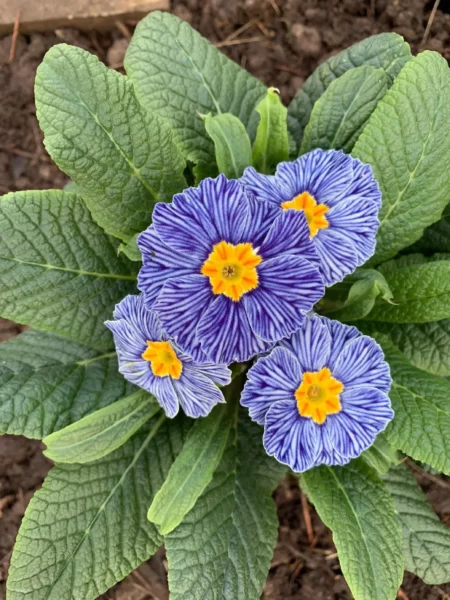
- Primula ‘zebra blue’
- Partial to full shade is better for this plant.
- Flowering Period: Late winter to early spring to late spring
- It gives flowers in blue shades with white stripes. They are often fragrant with a bright yellow center.
- These plants require humus-rich soil to thrive well.
- This long bloomer looks great under shrubs, roses, and in containers from winter to spring. It goes dormant during the hot summer months but blooms again in the fall.
- Deer and rabbits are not attracted to this plant.
Recommended species:
- Bellarina Cobalt Blue’
- ‘Zebra Blue’ has blue and white striped flowers with a yellow center.
Pansy
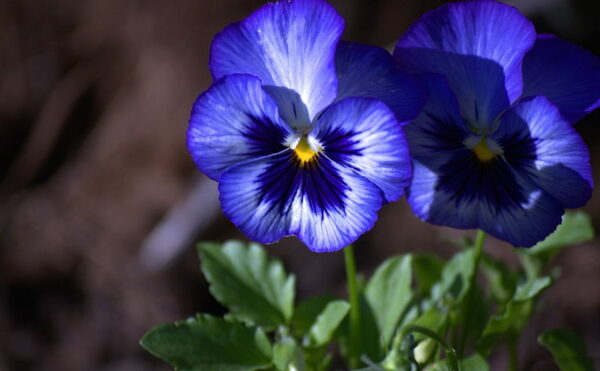
- Annual in most areas, short-lived perennials this plant thrives well in winters, but they also grow in summers but are not too hot.
- Sun, partial shade growing environment.
- Blooming Period: Spring, Autumn
- Flower Color: Blue and most other colors
- Pansies are bright little flowers of stunningly beautiful blue and light blue.
- Pansies spring-flowering plants will bloom all winter but will become dormant as temperatures rise in late spring. After that, it should be replaced with a more heat-tolerant annual.
- Pansies should be watered regularly every three weeks and fertilized with a water-soluble low nitrogen fertilizer.
Pansy Varieties:
- ‘Blue and Purple Rain’
- “Delta Marina”
Sweet Pea Bulbs
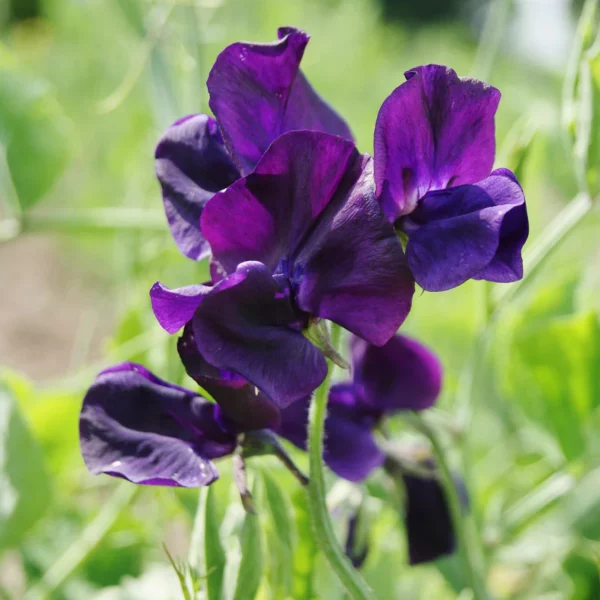
- Botanical name: Lathyrus odoratus
- Sweet Pea comes found in beautiful sky blue flower shades and emits a soothing fragrance which is often used in perfume making.
- Requires Soil type: Good Drainage with better nutrients in the soil.
- Full sun growing exposure is good for this type.
- Sweet Pea plant is a blue-flowering plant that sprouts slowly, causing it a bit more challenging to grow. They are very sturdy when grown.
Veronica
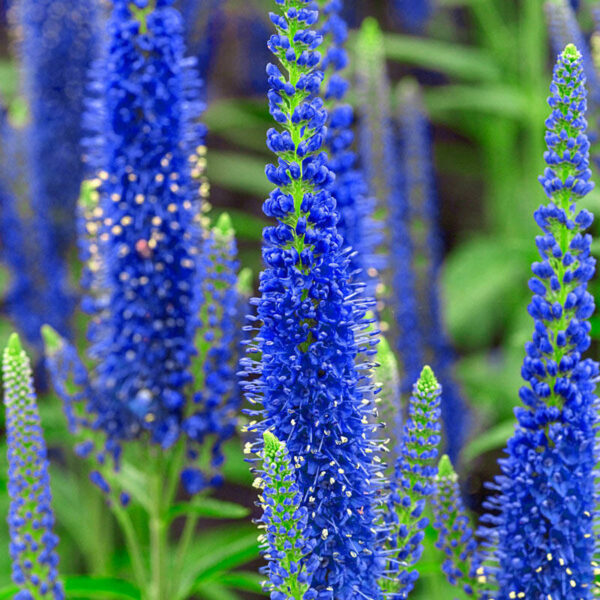
- Veronica, also known as speedwell. It is a perennial with long spikes of small petals. It rises up to 3 feet tall and is 2-18 inches long flower that grows from spring to fall.
- Require Soil type: Good Drainage soil.
- Full Sun/Partial shade growing zones are needed for this type of plant.
- These annuals are effortless to grow and will attach butterflies and hummingbirds to frequent your garden.
- Some parts of the plant are poisonous to humans and pets, so you have to pay attention to this matter.
Which blue flower plants bloom in spring while gardening?
There are many different types of blue flowers that bloom in the spring. Here are some examples:
- Bluebells (Hyacinthoides non-scripta): These delicate flowers are native to Europe and produce clusters of bell-shaped blue flowers in early spring.
- Grape hyacinth (Muscari armeniacum): These small, bulbous plants produce spikes of tiny, bell-shaped blue flowers in early to mid-spring.
- Forget-me-nots (Myosotis spp.): These small, dainty flowers produce clusters of tiny blue flowers with yellow centers in mid-spring.
- Siberian squill (Scilla siberica): These small, bulbous plants produce clusters of blue, star-shaped flowers in early to mid-spring.
- Glory of the snow (Chionodoxa spp.): These small, bulbous plants produce clusters of star-shaped blue flowers in early to mid-spring.
- Bluebells of Scotland (Campanula rotundifolia): These wildflowers produce delicate, bell-shaped blue flowers on tall stems in mid to late spring.
- Virginia Bluebells (Mertensia virginica): These native wildflowers produce clusters of pink buds that open to reveal beautiful blue flowers in mid-spring.
